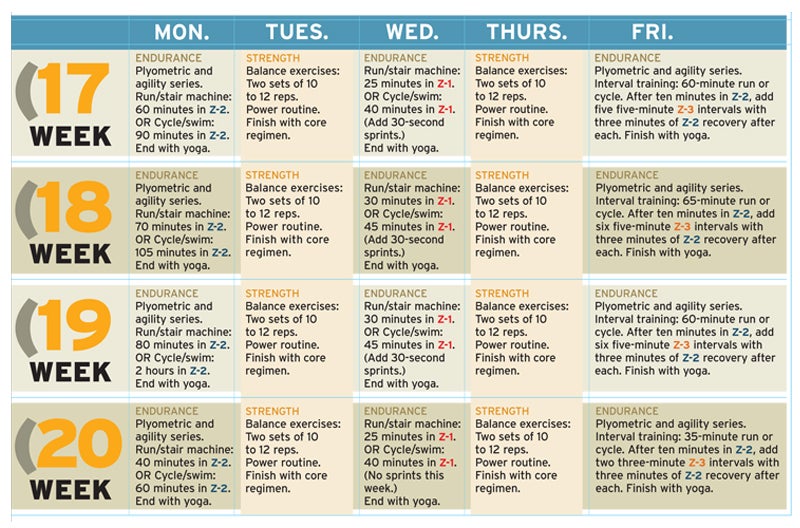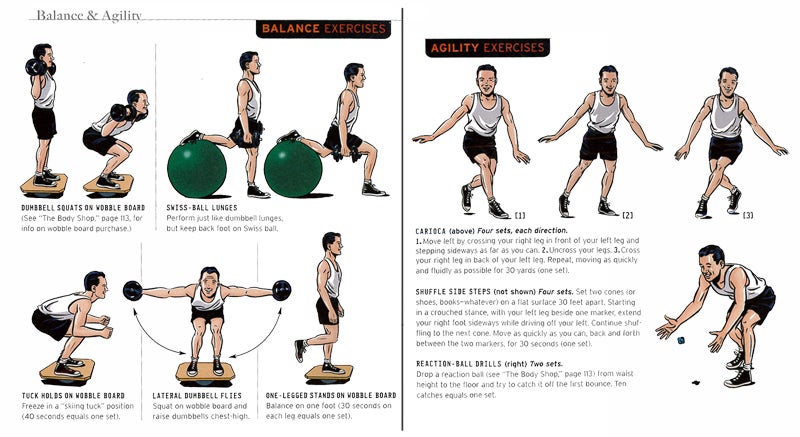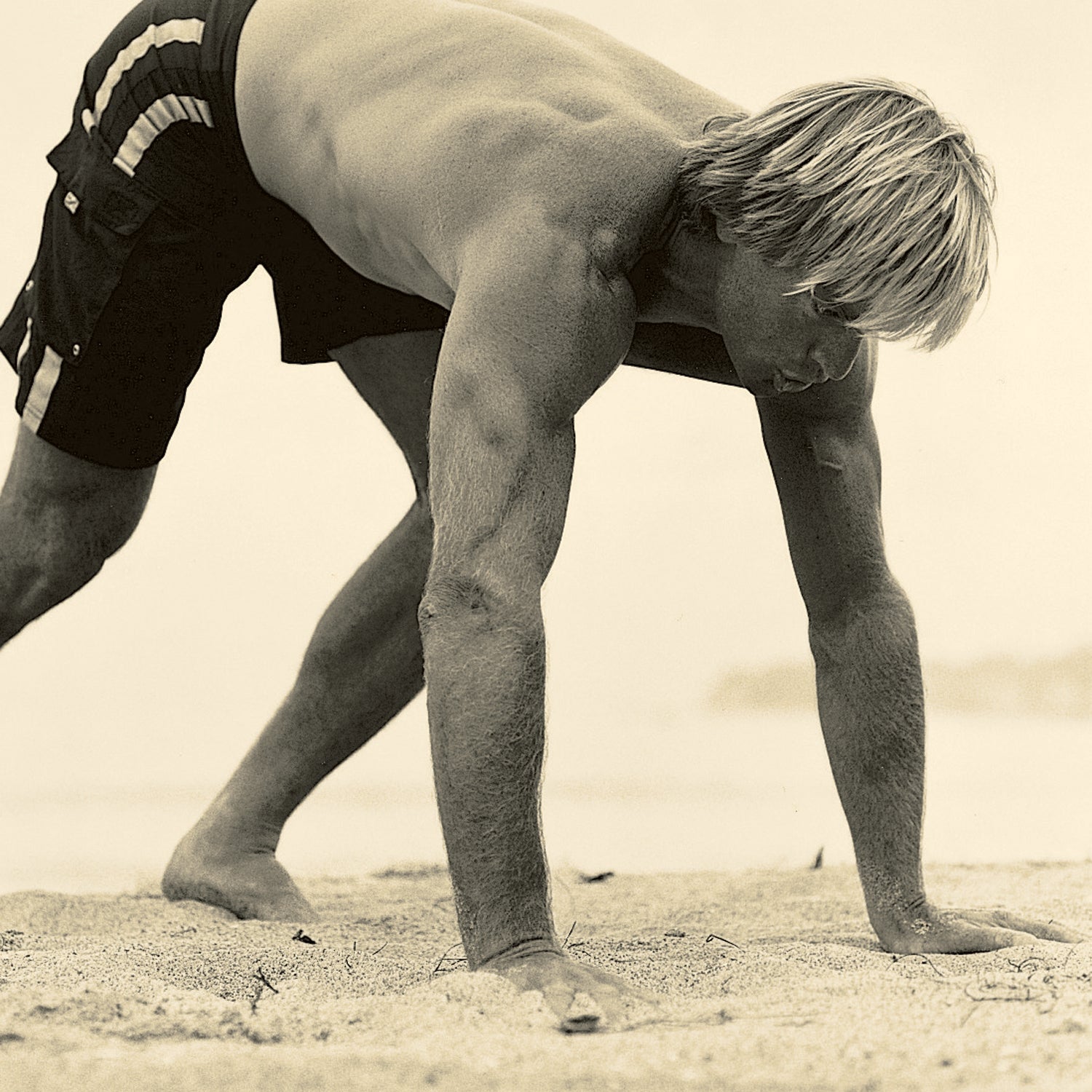By now you're probably wondering: Are we there yet?
We are. But the journey to total fitness consciousness never really endsÔÇöand the road to follow-through is fraught with peril. To maintain the Shape of Your Life and reach athletic nirvana, you must make stamina, flexibility, and reinvention your repeated mantras.
I know what you're thinking: The guy has lost it. Quite the contrary, and you will soon see why. To explain, permit me to briefly rehash my own fitness sob story.
It all began over a year ago, after a botched attempt to get chiseled on the cheap six weeks before surf season left me burnt out and chronically irritable. When ║┌┴¤│ď╣¤═° decided to mark its 25th anniversary with a fitness plan promoting the performance breakthroughs of the last two and a half decades, I jumped at the chance to learn from my own mistakes. And as I pored over the fitness flotsam of the American media landscapeÔÇöglossy magazines with six-pack cover models and stale self-help books in permanent residence on the best-seller listsÔÇöit became clear that fitness had been boiled down to one uninspiring goal: looking good. Which isn't good enough. Getting fit shouldn't require choosing between advice designed to make you feel guilty or to pander to the vanity of chest waxers. So we decided to create a new kind of planÔÇöone that promised not only to get you primed for inspiring outdoor adventure, but also to sustain you for the rest of your days.
Well, if you've been ghosting me on this odyssey, consider the first promise fulfilled. By now you've rebuilt your endurance engine through periodized heart-rate training; and by lifting weights to develop your core you've acquired strength that translates to real-world sports. You've embraced granola-free flexibility through Ashtanga yoga and, with your fitness foundation built, unlocked your speed and power with plyometrics. Now, in the final installment of the Shape of Your Life plan, we'll explore the secrets of balance and agility. And then? After 20 periodized weeks, you'll be ready for the whole point of this endeavor: to meet the challenge of that autumn triathlon, paddling trip, ten-kilometer run, five-day trek through the mountainsÔÇöanything, reallyÔÇöin the best shape of your life.
That was the easy part. To deliver our second promiseÔÇökeeping you thereÔÇöthis month we've done some heavy lifting of our own. On the following pages, we'll show you the only eight items you'll ever need in a home gym, share sage advice from the country's most innovative fitness advisers, and provide the essential principles you'll need to be your own personal trainer. Then we'll explain exactly how to take this five-month plan and turn it into an endlessly renewable blueprint for the Shape of Your Life. Congratulations. You've finished the journeyÔÇöbut the end is really just the beginning.
Completing the Picture: Balance and Agility

Every morning as you roll out of bed and stand up, a continuous neurological process works to keep you upright: Sensors and receptors in your joints and muscles send messages to your brain about where they are in space; your brain then analyzes the data and sends the appropriate response to the small stabilizer muscles that keep you vertical. This process is called balance, and to avoid disaster while spinning down a winding slice of boulder-strewn singletrack, it must be fine-tuned far beyond the╠řability to stay on your feet every morning.
“Improving balance,” says Bernard Petiot, training director for Cirque du Soleil, arguably the most preternaturally proprioceptive group of people on the planet, “is a matter of systematic and progressive exposure to unbalanced situations.” Outdoor athletes tend to do this naturally as they learn new sports. “If you look at skateboarders, climbers, and snowboarders,” Petiot explatins, “they will progressively increase the complexity of what they are doing.” But to develop the general system as a whole, you need to put in time at the gym.
Specifically, Petiot prescreibes taking many of the strength-training lifts you've already learned in the SYL programÔÇöflies, squats, lunges, etc.ÔÇöand further destabilizing them on a wobble board, a platform designed to make you feel like you're standing on a ship while performing each exercise.
But balance is only half of the final equation. To round out your fitness arsenal, you need agility, which from an athletic standpoint is your ability to remain graceful on the fly while making quick stops and stars. “For outdoor sports,” says Peter Twist, a conditioning coach to NHL and NBA athletes, “a lot of your training is very linearÔÇöcycling or running in a straight line. But most of the situations for which you need agility are multidirectional, with a lot of sudden changes in direction.”╠ř
To get you off the straight and narrow, you'll add three agility drills to your Monday and Friday plyometric sessions. In addition to traditional shuffle-step drills, this means playing catch with an exasperating toy called a reaction ball, which bounces in unexpected directions. By the end of the month, you'll be quicker, better grounded, and less likely to take a humility walk through your drugstore's esastic-bandage aisle.
Balance and Agility 101

Did we mention how you need to╠řupgrade your balance and agility? To begin, you'll╠řadd five new balance exercises to your strength-training sessions on Tuesday and Thursday. In addition, you'll╠řcontinue your Olympic power lifts starting in Week 17 with dumbbells weighing 10 percent more than what you were using at the end of month four, and╠řfinish off your workout with some core exercises╠řyou've learned in previous months . Meanwhile, to address agility, on Mondays and Fridays you'll╠řadd three agility drills to the plyometric speed workout you began last month. Always complete these two regimens (plyometrics and agility) before you begin your endurance workout.╠ř
And as for endurance, these last weeks will be the most difficult yet. But don't be intimidated; it's your final month of heart-rate training, and thanks to the gradual buildup since month one, your body is prepared for the hard work. On Mondays, your Zone-2 distance workouts will take advantage of the last hours of daylight saving time by╠řincreasing the duration╠řto 80 minutes for runners and two hours for cyclists and swimmers. On Wednesdays, you'll continue your reserve speed work from last month bypunctuating your recovery runs with six sprints╠ř(try to reduce the rest intervals between each). Last but not least, on Fridays, you'll╠řfinish your interval training╠řwith six repetitions.
Finally, to keep you limber and give your body the proper cooldown it needs to recover,╠řcomplete each endurance workout with the╠řAshtanga yoga series╠řunveiled in month three, and increase the╠řSun Salutation╠řcount to eight or ten.╠ř
Power Routine (3 sets of 6 reps)
- Rotational clean-pulls
- Clean and jerks (combine clean-pulls and squat presses from last month into one exercise)
Core Regimen (2 sets of 25)
- Swiss-ball crunches
- Oblique Swiss-ball crunches
- Swiss-ball push-ups
╠ř(2 sets of 10-12 reps)
- Medicine-ball chops
Yoga Series
- Sun Salutation
- Warrior I
- Triangle pose
- Back stretch
- Boat pose
- Tree pose
- Hamstring stretch
with the fifth installment in our interactive training plan.


